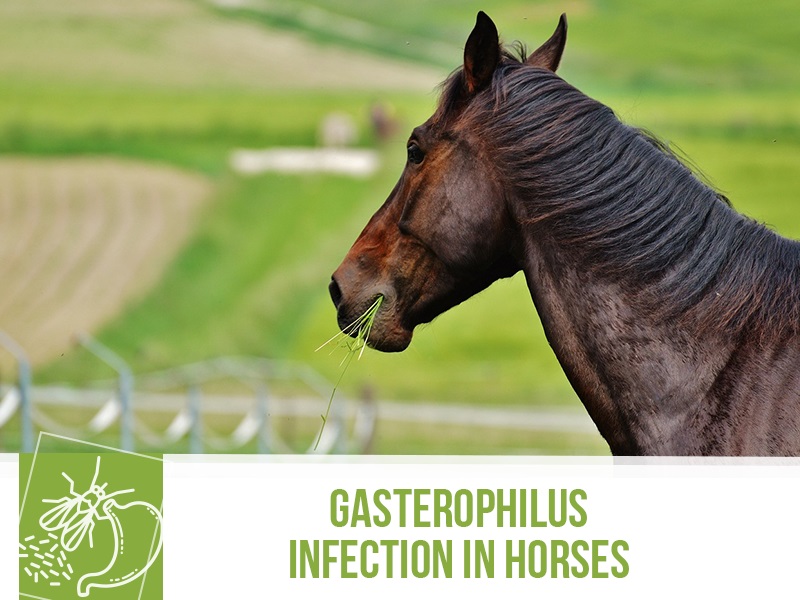
Gasterophilus Infection in Horses

We bring you the curious case of the stomach botfly in horses which is caused by several species of the Gasterophilus genus.
This disease is called a myiasis, which is the medical term for issues caused by the larvae of several species of flies. These flies lay eggs on the horse's coat and as they hatch into larvae they migrate to several tissues. Fortunately, these eggs can be spotted with the naked eye, especially around the forelimbs and shoulders of the horse so keep an eye out for odd white spots that may be lingering on their fur.
Some of the big spots of infection are mouth, throat and stomach. Different species have different site preferences but they all have larvae which attach to the cardiac or pyloric regions of the stomach. Their development is quite long, of around 8 to 10 months and at the end of all this nasty business, they pass out via faeces and will turn into adults on the soil.
Clinical signs are fairly nonspecific and because these larvae will attach to the lining of the stomach, symptoms might include:
- Ulcerations
- Obstructions
- Anaemia
- Diarrhoea
However, sometimes a great deal of these larvae might be attached to this organ and not have any significant clinical signs.
There are several things you can do to reduce the prevalence of botfly larvae infection but it will depend a lot on your region, frequency of travel and where your horses are kept. Don't forget, always keep a good track of deworming treatments and seasons, and ask your vet what you can do to best prevent or treat your fabulous equine friends that might be afflicted with this disease.
Would you like to know more about horses? Check our Equine Courses:
Equine courses
Published: 31 Jul 2017
Read the previous article: An important message to dog owners: Beware of Grass Seeds!

